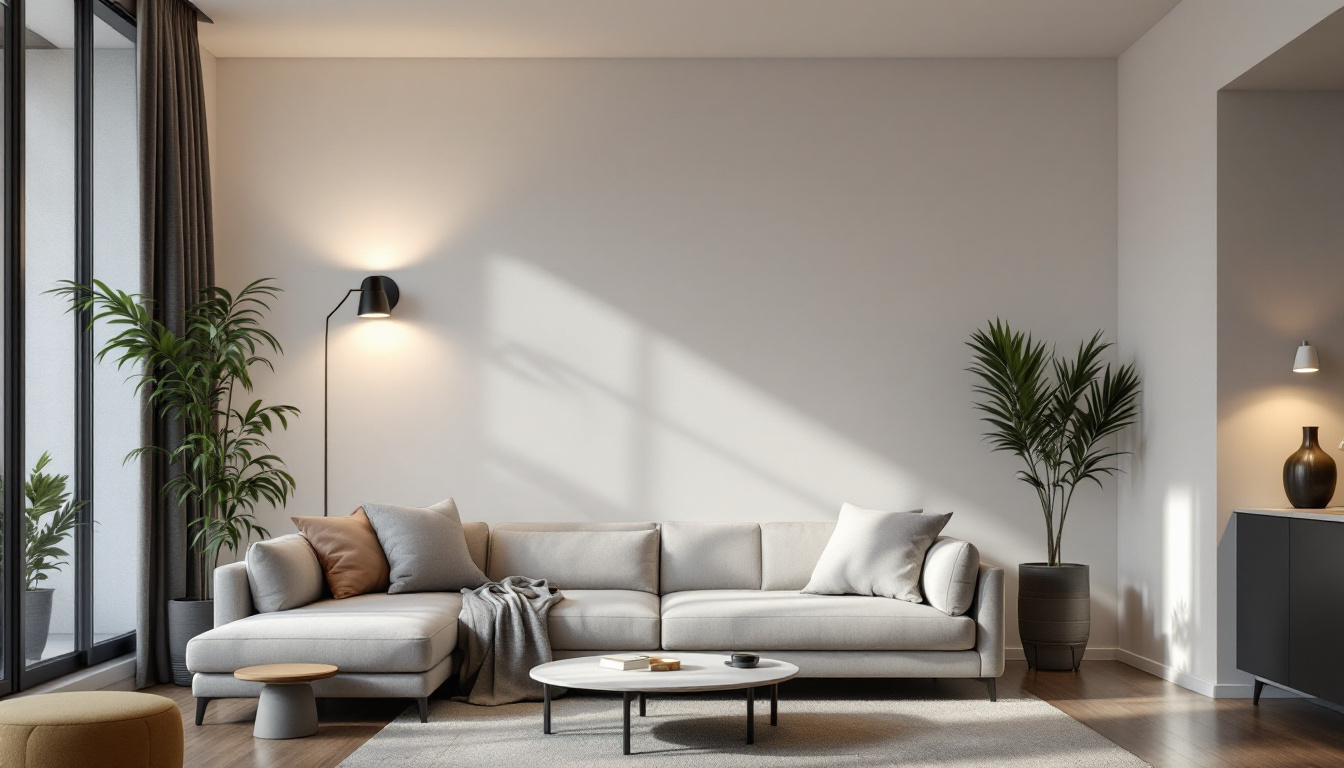
In the world of lighting, the choice of technology can significantly impact both performance and cost-effectiveness. High-Intensity Discharge (HID) lights have long been a staple in various applications, from street lighting to industrial settings. However, with the emergence of alternatives such as LED and fluorescent lighting, contractors are faced with the question: which option is the best for their projects? This article delves into the characteristics of HIDs and their alternatives, providing insights to help lighting contractors make informed decisions.
High-Intensity Discharge lights are known for their bright output and efficiency. They work by creating an arc between two electrodes in a gas-filled chamber, producing a significant amount of light. This section explores the features and benefits of HIDs, highlighting why they remain a popular choice for many contractors.
One of the most notable advantages of HIDs is their exceptional brightness. They are capable of producing a high lumen output, making them ideal for applications that require intense illumination, such as parking lots and warehouses. Furthermore, HIDs are generally more efficient than incandescent bulbs, converting a larger portion of energy into light rather than heat. This efficiency not only reduces energy consumption but also contributes to lower electricity bills, making HIDs an environmentally friendly choice. Additionally, the crisp and clear light produced by HIDs enhances visibility, which is particularly beneficial in safety-sensitive areas like roadways and construction sites.
HID lights typically have a longer lifespan compared to traditional incandescent bulbs, often lasting up to 24,000 hours or more. This longevity translates into lower replacement costs and reduced maintenance efforts, making them a cost-effective option for contractors. However, it is essential to consider the initial investment, as HID fixtures can be more expensive upfront than some alternatives. Despite this, the long-term savings on maintenance and energy bills often outweigh the initial costs, making HIDs a smart financial decision for large-scale projects. Furthermore, the reduced frequency of replacements means less waste, aligning with sustainable practices that many contractors are now prioritizing.
HIDs are versatile and can be used in various settings, including outdoor lighting, stadiums, and even in commercial spaces. Their ability to provide focused light makes them suitable for both general and task lighting. This adaptability is a significant reason why many contractors continue to choose HIDs for diverse projects. In addition to their use in parking lots and warehouses, HIDs are also prevalent in street lighting, where their ability to illuminate large areas with minimal fixtures is invaluable. Moreover, advancements in HID technology have led to the development of specialized bulbs, such as those designed for horticultural applications, which provide the specific light spectrum needed for plant growth. This expansion into new fields further emphasizes the flexibility and utility of HID lighting solutions across various industries.
“`html
While HIDs have their advantages, the rise of LED and fluorescent lighting has introduced new dynamics to the market. Each alternative has its unique features, benefits, and drawbacks. This section examines these alternatives to help contractors understand their options better.
Light Emitting Diodes (LEDs) have gained immense popularity in recent years due to their energy efficiency and versatility. They operate differently than HIDs, using a semiconductor to convert electricity into light. This technology offers several advantages that are particularly appealing to contractors.
LEDs consume significantly less energy than HIDs, often using up to 75% less power for the same lumen output. This efficiency translates into lower electricity bills, making them an attractive option for both contractors and end-users. Additionally, the reduced energy consumption contributes to a smaller carbon footprint, aligning with sustainability goals. The long-term savings on energy costs can be a compelling selling point for contractors looking to provide value to their clients.
LEDs can last up to 50,000 hours or more, far surpassing the lifespan of HIDs. This extended lifespan means fewer replacements and lower maintenance costs over time. Moreover, LEDs are more durable and resistant to shock and vibration, making them suitable for a wide range of environments. This resilience is particularly beneficial in industrial settings where equipment may be subjected to harsh conditions, ensuring that lighting remains consistent and reliable.
LEDs offer a variety of color temperatures, allowing contractors to choose the perfect ambiance for their projects. Whether a warm, inviting light is needed for a restaurant or a cool, bright light for a warehouse, LEDs provide flexibility in lighting design. Additionally, the quality of light produced by LEDs is often superior, with better color rendering capabilities. This feature is essential in settings such as retail stores, where accurate color representation can significantly influence purchasing decisions.
Fluorescent lights have been a common choice for commercial and industrial applications for many years. They work by passing electricity through a gas, producing ultraviolet light that excites a phosphor coating inside the bulb, resulting in visible light. While they are not as popular as LEDs today, they still hold certain advantages.
Fluorescent lights are generally less expensive than both HIDs and LEDs, making them a budget-friendly option for contractors working on tight margins. Their initial cost can be appealing, especially for projects where budget constraints are a primary concern. Additionally, the availability of various fluorescent fixtures can provide contractors with a wide range of choices to fit different project requirements without breaking the bank.
While not as efficient as LEDs, fluorescent lights are still more efficient than incandescent bulbs. They provide a good amount of brightness, making them suitable for various applications. However, they may not reach the same lumen output as HIDs in larger spaces. This characteristic can be particularly relevant in environments like warehouses or large retail stores, where high levels of illumination are necessary to ensure safety and visibility. Furthermore, advancements in fluorescent technology have led to the development of high-output fluorescent lamps, which can offer increased brightness and efficiency, making them a viable option for certain applications.
Fluorescent lighting does have some environmental considerations that contractors should be aware of. The bulbs contain small amounts of mercury, which necessitates careful disposal to prevent environmental contamination. However, many manufacturers are now producing low-mercury and even mercury-free options, which can help mitigate these concerns. As sustainability becomes increasingly important in the construction industry, selecting the right type of fluorescent lighting can align with eco-friendly practices while still delivering adequate performance.
“`
When choosing between HIDs and their alternatives, contractors must consider various factors, including application, cost, and energy efficiency. This comparative analysis aims to provide a clearer picture of how these options stack up against one another.
HIDs often come with higher initial costs due to the price of fixtures and installation. However, their longevity can lead to long-term savings through reduced replacement and maintenance costs. In contrast, while LEDs may have a higher upfront cost compared to fluorescents, their energy efficiency and lifespan often result in substantial savings over time. Contractors should evaluate the total cost of ownership for each option to make the best choice for their projects.
Energy consumption is a critical consideration in today’s environmentally conscious market. LEDs are the clear winner in this category, using significantly less energy than both HIDs and fluorescents. This lower energy consumption not only reduces operational costs but also lessens the environmental impact, making LEDs a preferred choice for contractors aiming to promote sustainability.
While HIDs produce a high lumen output, the quality of light can sometimes be less favorable compared to LEDs. The latter offers better color rendering and a variety of color temperatures, allowing for more tailored lighting solutions. Fluorescent lights, while decent, may not provide the same level of quality as LEDs, especially in terms of color accuracy and consistency.
Choosing the right lighting technology involves careful consideration of several factors. Contractors must assess the specific needs of their projects and the preferences of their clients. Here are some key factors to keep in mind when making a decision.
The intended application plays a crucial role in determining the best lighting solution. For instance, HIDs may be ideal for outdoor spaces requiring high-intensity lighting, while LEDs may be better suited for indoor applications where energy efficiency and light quality are paramount. Understanding the specific requirements of each project can guide contractors toward the most appropriate choice.
Client preferences often dictate the type of lighting chosen for a project. Some clients may prioritize initial costs, while others may focus on long-term savings and energy efficiency. Engaging in discussions with clients about their priorities can help contractors recommend the best option that aligns with their needs and budget.
Regulations regarding energy efficiency and environmental impact are becoming increasingly stringent. Contractors should stay informed about local codes and standards that may influence their lighting choices. Opting for energy-efficient solutions like LEDs can not only ensure compliance but also enhance the contractor’s reputation as a responsible and forward-thinking professional.
The lighting industry is evolving rapidly, with new technologies and innovations continually reshaping the landscape. While HIDs have been a reliable choice for many years, the rise of LEDs and improvements in fluorescent lighting offer compelling alternatives that contractors should consider. Ultimately, the decision will depend on various factors, including application requirements, client preferences, and budget constraints.
As the demand for energy-efficient and sustainable solutions grows, contractors who remain informed about the latest advancements in lighting technology will be better positioned to meet their clients’ needs. By weighing the pros and cons of HIDs and their alternatives, lighting contractors can make informed decisions that enhance their projects and contribute to a more sustainable future.
“`html
Ready to make the smart choice for your lighting needs? At LumenWholesale, we specialize in providing lighting contractors with the highest quality, spec-grade lighting products at exceptional wholesale prices. Say goodbye to local distributor markups and hello to a vast selection of reliable, high-performance lighting that meets the most rigorous industry standards. With the added convenience of free shipping on bulk orders, you can trust that you’re getting premium lighting at the best value — without any hidden fees. Elevate your lighting projects by choosing LumenWholesale, where quality, affordability, and convenience come together seamlessly. Wholesale Lighting at the Best Value
“`

Explore the innovative strategies smart lighting contractors employ with LED technology to revolutionize energy efficiency and design.

Discover essential insights for lighting contractors navigating the evolving landscape of smart home automation.

Discover essential tips for lighting contractors to seamlessly install undercabinet LED lights.

Discover how a groundbreaking invention revolutionized safety standards in lighting, surpassing traditional oil lamps.